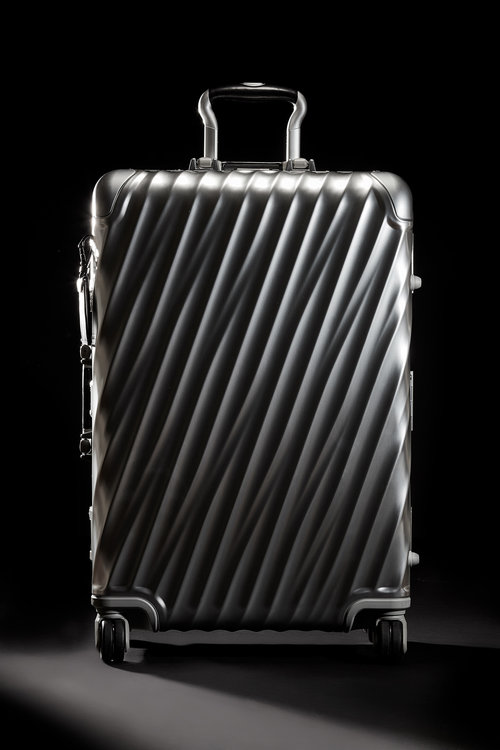Creating Tumi’s first aluminum suitcase was not just an experiment in material, but also in approach. “Travel has changed, and I think people want to travel with a piece of art,” says creative director Michael Petry. In ideating the look of the 19 Degree series, named for the angle on which the suitcase’s grooves are cut, Petry and his team referenced a melange of sinuous lines, both man-made and natural. His mood boards included curvilinear architecture, elegant medical equipment, and references from nature. The resulting sculptural exterior is a feat, considering its industrial material. As far as the construction, “it’s very similar to how you build a building—you aim for tallest, strongest, and lightest,” Petry says. This doesn’t mean he skimped on the “geeky details,” though. Thoughtful elements, like its protective corner caps, self-positioning handles, smartly pocketed interior, and monogram patch add an extra experiential layer. Even the distinct sound of the locks was intentional. For that, Petry looked to automobiles, studying and replicating the tone of a premium car door. Unlike a Porsche or Bentley, however, the suitcase is meant to get beat up with use. Says Petry: “I wouldn’t make an aluminum piece of luggage if I didn’t think it would be timeless.” Tumi 19 Degree aluminum short trip packing case, $1,195; tumi.com
A Tumi Suitcase That is Art and Armor
Luggage label Tumi designed its new 19 Degree series to be as tough as it is elegant.
By Courtney KenefickOctober 5, 2016

(Photo Josh Dickinson)
…
Related Stories
The Joyce is the Restaurant South Beach Has Been...
Nordic Knots Introduces a Home Collection
Hermès Suspends Time at its Madison Avenue Boutique
“In the Bedroom” with Galerie Solis at The
Exclusive: Miami’s Maximalist Jungle Restaurant...
ROOM’s “Designers on Design” Series...
Basic.Space’s Second In-Person Retail Experience
Jewelry Designer Presley Oldham’s Debut Home...
Helena Clunies-Ross Introduces Her Calma Furniture...
Nina Yashar Follows “Nilufar Depot, The First...
Next Article
